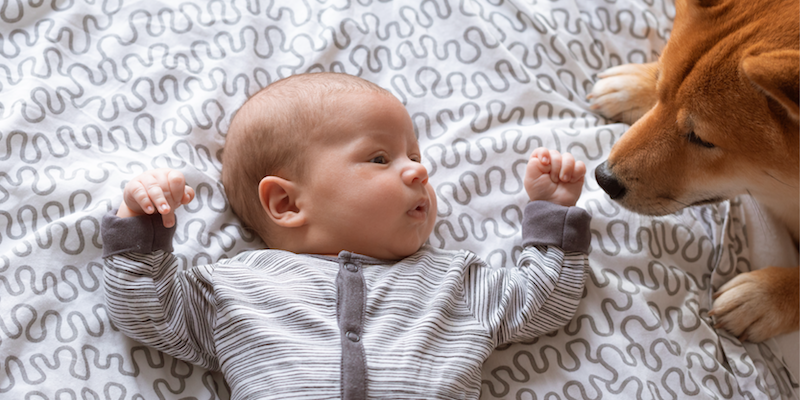
10 Ways to Safely Introduce Your Pets to a New Baby
First comes love. Then comes marriage. But before the baby comes in a baby carriage, your furbaby is used to ruling the roost. Many couples fear the dynamic change when your furbaby is no longer the center of attention. In fact, it’s routinely listed as a top concern for couples trying to conceive. As a new baby enters the mix, there’s an expected adjustment period for family pets. By planning ahead, the transition can be smooth with both baby and furbaby becoming fast friends. We compiled a step-by-step guide to make sure your two little ones get along right from the start. Here are 10 ways to safely introduce your pets to a new baby.
Schedule a checkup
Is your pet in good health and up-to-date on all vaccinations? If not, before the baby gets here would be a great time to make sure any health-related concerns are addressed. If your pet needs to be spayed or neutered, the Human Society says this can overall make your pet calmer and more laid-back to environment changes.
Make gradual changes to your pet’s routines
The idea for making gradual adjustments is so that when the baby comes, the pet doesn’t associate the baby with a sudden amount of changes. Ideas for changes include a change in where the pet sleeps or when he gets walked. And then start going through your eventual routine with baby, including changing, feeding, rocking and walking with an empty stroller.
Play pretend
Do you have a lifelike doll you can use as a stand-in for baby? It’s a good idea for the pet to start getting used to you being around something else besides her. If you can get the pet used to having an infant in the house before the baby comes, he might consider the actual baby to be old news.
New rules begin before baby
Are there things you want to change with your pet, like jumping on the furniture or sleeping with you? Keep the rules separate from the baby. Establish the new rules far before baby gets here. It’s a way to hopefully ward off any misbehavior or negative reaction to your little one.
Set up the gear
A few weeks before you’re reaching your due date, set up the baby’s things like the swing, portable crib, bassinet, etc. Each item will have different smells and can make unusual sounds that your pet may need time getting used to. It’s best to have the pet get accustomed to them now, before baby arrives home.
Offer some space
If you don’t already have a designated “pet space” now would be a great time to create one. Encourage the animal to start spending time there by enticing them with treats, new toys, another water bowl and maybe a new bed or cat tree. The idea is to encourage a new special area for the pet to feel as “his” or “her” own space.
Think about a trainer
If your pet is displaying signs of acting out or aggression prior to baby arriving, it may be best to try obedience classes, or consider hiring a trainer to come to your home. There are many different ways the pet can learn to adjust, and sometimes it takes some outside support to do the trick.
Allow your pet to adjust
Once you come home with baby, be sure to greet her so she doesn’t get too excited and try jumping. Give your pet the opportunity to adjust to the smell, sight and sound of the newborn for a few days. Then you can start thinking about introducing them in closer proximity.
Supervise sniffing
After a few days, and you feel ready to allow the pet to come closer, try supervising sniffing. Allow the pet to sniff the baby while controlled on a leash. The important thing to remember is that you should let the pet do the approaching. Don’t try to force any kind of interaction between the two. Inviting prevents biting. Once the pet is able to do some sniffing, then try allowing her to come closer without being on a leash. Be prepared for the pet to react if the baby suddenly screams or cries, as it could be interpreted as a sign of, “hey, let’s play!” Always keep yourself in between the pet and the baby and supervise at all times during the initial introductions. Reinforce positive behavior with praise and treats.
Keep attention equal to your pet
Moving forward, always keep positive energy around the pet and baby. Give your pet plenty of attention when the baby is around, so he can see that your energy is regardless of whether the baby is in the picture. And if the pet takes one of the baby’s toys, just simply replace it with one of the pet’s toys. The idea is that you don’t want the baby to be associated with anything negative in the pet’s mind.
Join the other 100,000+ new parents who love Bitsy Boxes.

